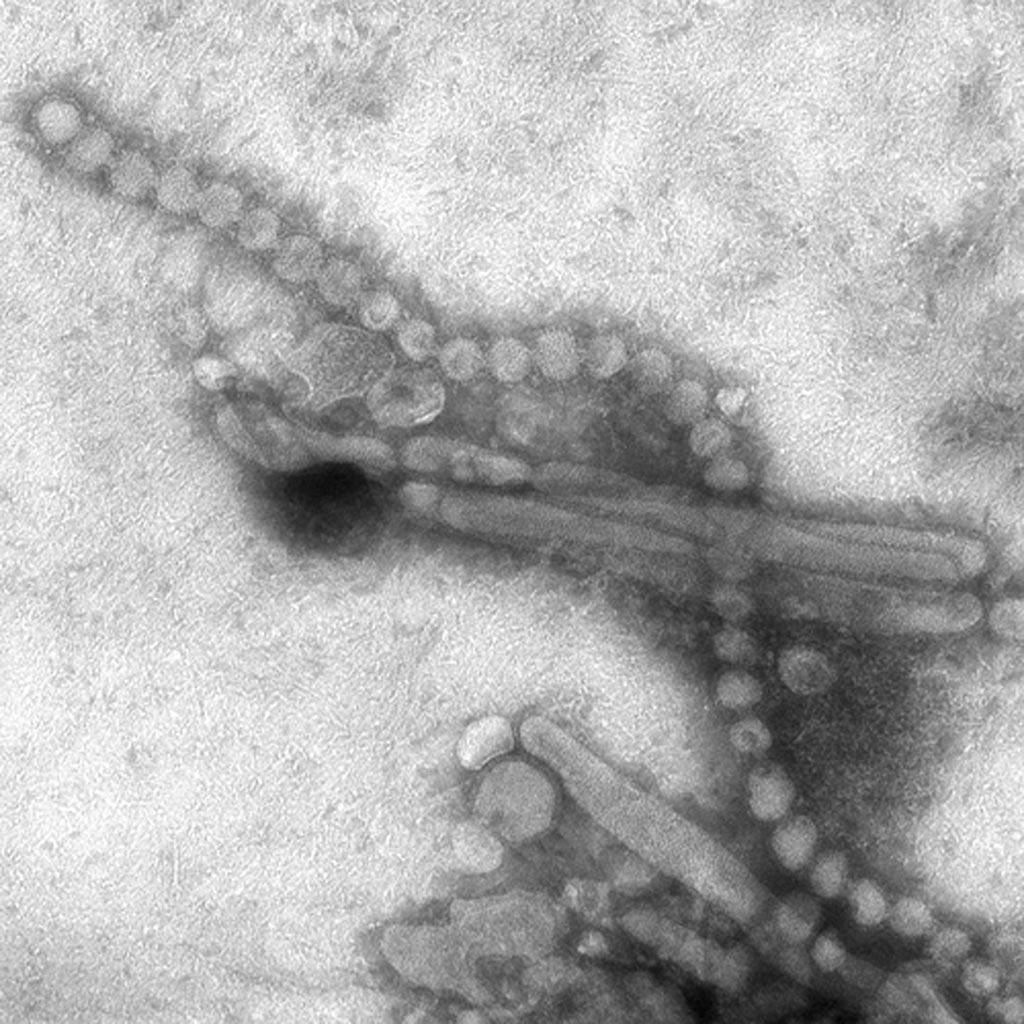RNA Analysis of Nasal Swabs Diagnoses Respiratory Virus Infection
By LabMedica International staff writers
Posted on 02 Jan 2018
A panel of three mRNAs has been shown to be able to predict presence of respiratory virus infection in nasal samples with an accuracy of 97%.Posted on 02 Jan 2018
Despite the high burden of respiratory infection and the importance of early and accurate diagnosis, there is at this time no simple diagnostic test to rule in viral infection as a cause of respiratory symptoms.

Image: A scanning electron microscope (SEM) image of the respiratory virus Influenza A H7N9 (Photo courtesy of the CDC).
To fill this gap, investigators at Yale University (New London, CT, USA) performed RNASeq on human nasal epithelial cells following stimulation of the intracellular viral recognition receptor RIG-I. Next, they evaluated whether measuring identified host mRNAs and proteins from patient nasopharyngeal swabs could predict the presence of a respiratory virus in the sample. Samples were obtained from patients who were primarily older adults or young children, reflecting the population tested for respiratory viruses in the healthcare system.
RNASeq (RNA sequencing) uses next-generation sequencing (NGS) to reveal the presence and quantity of RNA in a biological sample at a given moment in time. This technique is used to analyze the continuously changing cellular transcriptome. Specifically, RNASeq facilitates the ability to look at alternative gene spliced transcripts, post-transcriptional modifications, gene fusion, mutations/SNPs, and changes in gene expression over time, or differences in gene expression in different groups or treatments. In addition to mRNA transcripts, RNASeq can look at different populations of RNA to include total RNA, small RNA, such as miRNA, tRNA, and ribosomal profiling.
The investigators initially showed that a signature of three mRNAs, CXCL10, IFIT2, and OASL, predicted respiratory virus detection with an accuracy of 97% and identified proteins correlating with virus detection. In a follow-up study, elevated CXCL11 or CXCL10 protein levels identified samples containing respiratory viruses, including viruses not on the initial test panel.
"It is a simpler test and more cost-effective for looking at viral infection," said senior author Dr. Ellen Foxman, assistant professor of laboratory medicine at Yale University. "Instead of looking for individual viruses, our test asks the question: "Is the body fighting a virus?". We found we can answer that question very well. One reason to test is to know why the patient is sick. The other reason is to make a decision about whether people who are not that sick should get antibiotics."
The respiratory virus test was described in the December 21, 2017, online edition of The Journal of Infectious Diseases.
Related Links:
Yale University













